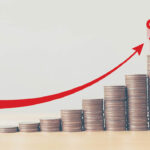Since United States (US) President, Donald Trump, took office on 20 January 2025, he has undoubtedly kicked up a lot of dust and sent markets into a tailspin. With the US mid-term elections coming up in 2026, we unpack Trump’s policies and look at why the clock may be ticking on his current red sweep – a Republican presidency, Senate and House.
Shortly after his election win, Trump announced the top priorities for his presidency – immigration, tariffs and fiscal stimulus. If we look back at Trump’s first 100 days in office, we see that he wasted no time. He executed an unprecedented number of executive orders, some of which have been implemented and others that are still being debated in the courts. In addition, Trump used that time to have conversations with an extraordinary number of world leaders. He met with Ukraine and Russia, he worked on trade deals with the United Kingdom (UK), China, Vietnam and even managed to squeeze South Africa onto his agenda.
But the fallout from Trump’s policies is hitting his voter base hard.
An initial fear for a global recession
The true impact of his policies was felt on 2 April, when Trump announced sweeping tariff hikes on all of the US’s trading partners. These hikes ranged from the 10% baseline tariff on all imported goods, to up to 50% tariffs for countries like Lesotho. Markets reacted as if the world had come to an end, and a global recession was predicted on the back of this decision. While the Trump administration implemented a 90-day pause on tariff increases to support trade negotiations, this merely postponed what now appears to be the next chapter of uncertainty.
Cutting federal jobs
Another blow for Trump was that while his plan for greater government efficiency did not achieve the promised savings, it did see federal employment reduced. However, a number of the job cuts impacted his voter base, which is a huge negative for Trump.
Joining the war
Trump has further alienated voters by getting involved in the Israel-Iran skirmish. In his campaign, he stressed that he, and the US, were done fighting other people’s wars. While it was short-lived, there was a lot of pushback when the US bombed Iran’s nuclear facilities, with many saying that he should have consulted Congress on the move.
The Big Beautiful Bill
Adding to the loss of faith in Trump’s presidency is the One Big Beautiful Bill Act that covers Trump’s tax proposals. This controversial bill has sparked debate over the US’s deficit, the (negative) reform of social programmes, and increased federal spending levels. The bill proposes large tax cuts, while adding $3.3 trillion to the federal deficit over the next 10 years.
This bill was the trigger for the massive public spat between Trump and Elon Musk. The funding for this bill was meant to come from savings Musk had promised through his Department of Government Efficiency (DOGE) efforts. However, by the time Musk left the White House, he had only managed $160 billion in savings, nowhere near the $2 trillion promised. Musk argues that the US cannot afford Trump’s bill, because it is giving tax breaks while increasing spending, and he is questioning where the money will come from.
As an aside, many believe that Musk’s outrage is less about the cost of the bill and more about the fact that it will see the scrapping of the $7,500 subsidy for buyers of electric vehicles, which will have a direct impact on the Tesla business model.
The vulnerable penalised
The Institute on Taxation and Economic Policy examined the impact Trump’s proposed tax laws will have on various income groups. Despite arguments that new laws will boost take-home pay, the Institute found that the top richest 5% of US earners will benefit from the new tax laws, while all other earners will end up paying more – with the two lowest income brackets being the most effected – as the Bill will see many of these people lose access to Medicaid and food aid. With the bill appearing to only benefit the ultra-wealthy, this may not go down well with his lower-income voter base.
The reaction to Trump’s first 100 days
As we settle into Trump’s second term, we may start seeing some resistance to his policies. Next year November, halfway through his presidency, Trump faces the US midterm elections. With his policies impacting the US economy, jobs and taxes, he may find his capacity to introduce wide-ranging changes severely curtailed by the end of 2026.
As such, following his first 100 days in office, we are seeing Trump allowing the dust to settle. He appears to be taking a more measured approach on some of his initial reform proposals. I believe this could be because he is realising that his political capital is under pressure and his “red sweep” could be under threat. Trump is also seeing his own party members turn with the passing of the Big Beautiful Bill, only being ratified because of the swing vote of Vice President JD Vance.
In addition, Trump is also seeing pushback from his policies on the ground:
Trump’s immigration policies have seen widespread protests in Los Angeles, a sanctuary city (where municipalities do not cooperate with federal immigration enforcement), with protestors taking and sharing pictures of immigrants being arrested. His tariff policies have seen the markets question whether the dollar can remain a safe-haven currency, especially given the increase in government debt in an economy running on enormous deficits, which will be compounded by the proposed tax cuts. Moody’s downgraded US government bonds from the highest rating to one below. While this is not significant, it does send an extremely important message around the sustainability of US debt levels.
Markets go from overreacting to underreacting
“Where is the world going to be after Trump?”
Trump’s first 100 days saw massive reactions from markets which created unprecedented volatility across all asset classes. The 2 April tariff announcement saw huge equity sell-offs on Wall Street, which experienced its worst day since the 2020 COVID-19 pandemic.
However, the deeper into Trump’s presidency we go, the more markets appear to be becoming circumspect around Trump’s unpredictable leadership style. They are realising that Trump himself is volatile, and what he says in the morning is not what happens in the evening. Now markets are starting to look at the longer-term implications of his policies and are asking, “Where is the world going to be after Trump?”
In addition, following the 2 April tariff announcement, the consensus expectation was that these policies will drive the US and the world into a recession. On the day, nobody anticipated a pause in the implementation of the tariffs or that some more favourable trade agreements would be struck during the 90-day hiatus. Given these latest developments, the International Monetary Fund (IMF), the World Bank and the Organization of Economic Cooperation and Development (OECD) have brightened their outlooks. So, while a recession was expected in April, they are now predicting that the global economy will continue to slow but is unlikely to enter an economic recession.
If we look at the OECD and the changes to its growth assumptions, the largest adjustment was made to US growth. From March to June this year, the OECD cut US growth projections by roughly 80 basis points. This highlights that the US will be hurt the most by Trump’s policies and will be the most impacted by inflation pressure caused by tariffs – again reiterating why the clock is ticking on Trump’s term. Trump’s policies have also put the US Federal Reserve (Fed) in a very difficult position. Even if the US central bank would like to cut rates due to a slowing economy, it is reticent to do so given the stickiness of US inflation. We expect this to continue for the next 12 to 18 months.
At Citadel, we agree that the world economy will slow to below capacity growth, while countries adjust towards the tariffs and find new trading partners, driving the global economy back to a new equilibrium and capacity growth over the next three to five years. We must also remember that Trump and the US still want to trade, and as such, Trump is still working on trade agreements with major trading partners, like the European Union (EU), Japan and even South Africa.
EU confidence boosted by defence spending
On the other side of the Atlantic, business confidence in the UK and EU has increased significantly – despite economic growth remaining weak – on the back of the announcement of the once-in-decades fiscal spend. We believe this boost in confidence is unlikely to be sustained. This is primarily because the increased fiscal spending is directed toward defence rather than productive infrastructure such as roads and bridges. As a result, the stimulus is less likely to generate long-term economic benefits or be recycled effectively through the broader economy.
The increase in fiscal spend, specifically in Germany, comes as the EU calls for defence spending to be increased to 5% of GDP. This spending is not to enter a war, but rather for EU countries to have the ability to protect themselves, especially given that the US is not supporting its allies any longer. The magnitude of this spend is aimed to match a trend of increased military spend by countries like Russia and China over the last decade.
The announcement of this defence spending has coincided with Trump’s return to the Oval Office. It has resulted in a massive increase in defence sector stocks, especially in the EU, which has supported EU equity markets year to date. The recent outperformance of EU markets, however, should not be seen as the beginning of the end of US exceptionalism given that it boils down to very specific sectors and companies. From an economic fundamental point the US still remains well ahead of Europe.
When trying to predict the future of the EU economy, we need to understand that the EU finds itself in an interesting position. While the US has positive population growth, through legal immigration, the EU countries are struggling with aging populations, along with low productivity levels. So the promise of increased fiscal spending that is boosting business confidence in the region, is not going to get them out of low economic growth given structural issues like demographics and labour productivity. Therefore, EU growth should pick up towards capacity but will remain below 1.5% over the next few years.
World economy a little brighter in the second half
Now in the second half of the year, there are encouraging signs of progress compared to the more subdued outlook in April. While we have readjusted our global growth outlook, for the next 12 to 18 months to below capacity growth – with the biggest adjustments being made to the US growth outlook, as it will take the brunt of the impact of Trump’s policies – given how dynamic the global economy and companies are, we do see the global economy normalising and finding a new equilibrium over the next three to five years.
On the positive side, the threat of a global recession is fading, and the global economy will get back to capacity growth of around 2.5%. We believe that is more than enough for the world to muddle along and for companies to make a reasonable profit, especially those that are well-positioned to navigate the current volatility and uncertainty.
What is important to note, at this juncture, is that the US’s contribution to global growth will reduce over the next few years, and that emerging Asia will pick up a lot of the slack left over from reduced US trade. As such, the makeup of the global economy will change going forward, where the US is going to make a smaller contribution to global growth.
South Africa – bigger troubles than Trump
South Africa did not escape Trump’s first 100 days in office. As an economy, we should perhaps feel “honoured” that Trump took the time to meet with South African President, Cyril Ramaphosa, at the White House. We join the likes of Russia, Ukraine, UK, China, and Japan in meeting Trump with the hopes of reaching trade deals and resolving diplomatic issues.
“South Africa did not escape Trump’s first 100 days in office.”
South Africa’s recent history with the new US administration has been rocky to say the least. Despite the ANC’s stance on Palestine, rumours of the ANC changing the street name on which the American embassy is located to that of a Palestinian activist, the ANC’s friendly stance towards Russia, Musk’s issues with getting a Starlink licence for South Africa due to empowerment policies, and the South African ambassador getting kicked out of the US, Ramaphosa still got an audience with Trump in the White House.
While Trump ambushed Ramaphosa in the press conference, Ramaphosa managed the pressure well and kept calm. He put on a face that showed he wants to rebuild South Africa’s political and diplomatic ties with America and the world. But the televised meeting was not where the real business took place. Following the “show” in the Oval Office, Trump and Ramaphosa had a productive meeting, which resulted in the possibility of new trade agreements.
We are still not sure what agreements will come out of this, and the Trump administration has increased tariffs on SA goods to 30% from 1 August. However, it has indicated that the US would like to continue with trade talks. This is positive because there may be an agreement that will allow for some duty-free exports for some of South Africa’s most important sectors. Keep in mind that 8% of our exports go to the US, half of these (precious metals) are duty-free. Cars, steel and aluminium, and agricultural produce make up the balance.
We must remember that while trade will benefit South Africa, it will always be “US First” for Trump. For example, Trump will dismiss economic empowerment as a racist policy, but this is simply because he wants US companies to invest without restriction. Trump’s stance is not about fixing political policies in South Africa; it is about making sure US companies benefit from unfettered access to invest and make money in South Africa, and also have a stepping stone into Africa, a continent with enormous growth potential.
While the meeting with Trump was a major step in fixing South Africa’s relationship with the US, in the current global environment, it is important that South Africa continues to build relationships with other trading partners across the world. What we hope comes out of the meeting with Trump is that it encourages the US to participate in the G20 later in the year. The G20 summit is a huge opportunity for South Africa to showcase the country to foreign investors.
Trump is not South Africa’s worst problem
South Africa has bigger problems than Trump, however. The country had three budgets proposed, with one not being tabled at all. This highlighted the disconnect between the priorities of the Government of National Unity (GNU) partners, particularly the ANC and the DA. The issue with South Africa’s budgets is that the government has run out of options, and the growth assumptions in the budget – that underpin tax revenues – are based on a South African growth trajectory of 1.4% for the next year and averaging 1.7% for the next three years. Given the country’s structural challenges, we do not believe this is realistic.
There are a number of important factors impacting South Africa’s growth trajectory:
1. SA’s investment problem
One of the biggest challenges facing South Africa’s economy is that of extremely low investment. Over the last two and a half decades, there has been a real lack of investment into the economy. Both local and foreign investment is well below desirable levels.
When it comes to local investment, South Africa falls below its emerging market (EM) peers. Local investment currently sits at around 13% of gross domestic product (GDP), compared to countries like Korea and Indonesia, which are sitting closer to 20% to 24% of GDP. In terms of government investments, it is sitting at around 4% of GDP, reflecting the government budget constraints. When we compare that to Korea at 10% and India at 16%, we clearly see that we are at the lower end of the scale in terms of fixed investment into the economy. The problem is, if we don’t invest, we cannot build capacity for future sustainable growth.
Our investment as a percentage of GDP was very close to the OECD average in 2008, running at around 22% of GDP. Since then, the OECD average has climbed to 25% and South Africa has fallen to 13%. The country was especially hard hit under the state capture years when the lack of trust and policy uncertainty saw many companies, both locally and abroad, stop investing. As such, investment has to be a central focus of the government over the next few years.
2. SA is not business friendly
One of the key challenges South Africa faces in attracting investment is its lack of business-friendly conditions. A comparative study by the OECD assessed South Africa’s business regulations—covering areas such as business licensing, tax and VAT registration, labour laws, and empowerment equity requirements—against those of various countries globally. The findings placed South Africa at the bottom of the rankings among its emerging market peers. This regulatory burden, when combined with persistent structural issues like underperforming ports, unreliable rail infrastructure, and ongoing electricity constraints, makes establishing and operating a business in the country particularly difficult. As a result, these obstacles serve as significant deterrents to foreign direct investment.
3. The GNU must thrive
The above two issues need to be dealt with urgently. With declining investment for 25 years, South Africa finds itself with serious structural issues that need fixing. This means that the GNU needs to stay intact in its current form so that it can drive business friendly policies and reforms. We can only hope that the GNU partners have learned something from the budget debacle as the country needs the GNU to pull together and move in the same direction.
4. SA must build global partnerships
In order to attract foreign direct investment and boost the local business outlook, South Africa needs strong trading partners. As such, it needs to start building strong relationships with countries across the globe. Ramaphosa’s visit to the US is a good start to that process.
The money has dried up
South Africa’s latest budget clearly shows that government finances have dried up. Debt to GDP is sitting at around 80% and our debt-servicing costs, which cost the country in excess of R1 billion per day, account for 20% of the total budget. That means that R1 in R5 spend by the government goes to servicing its debt costs. That makes up most of the country’s deficit, which sits at around 5% of GDP.
So, without borrowing more, how do we get the investment boom that is required off the ground? The government’s role is to continue with policy reform and fixing bottlenecks, which include ports, electricity supply, rail, and visa systems, to name a few.
One of the most positive things we are seeing coming out of the budget, compared to five years ago, is that the government is encouraging increased private sector participation. While it is a slow process, it will happen. Government may be in a corner financially, but corporate South Africa is not. SA-listed companies are currently sitting with the highest-ever level of cash on their balance sheets. So, they can make a significant contribution in terms of investing, especially if the government opens the doors more quickly and implements business-friendly policies.
In terms of economic growth, we are not as optimistic as National Treasury. This is mainly because right now, the biggest contribution to our growth is on the back of agriculture, which makes up just 3% of the local economy. While it is doing extremely well, after two quarters of double-digit growth, you cannot expect such a small sector to keep bailing out the economy for the rest of the year. Other sectors like construction, mining and manufacturing, the really important ones for employment, need to pick up speed. Unfortunately, these key sectors keep on printing negative numbers as they are being held back by the aforementioned issues.
SA growth – will remain under pressure for now
Looking at South Africa’s growth potential, there is still a lot of hard work to be done before we will see any fruits from structural reforms taking place. For the next 12 to 18 months, we expect South Africa’s growth to remain below 1%. If meaningful reforms are implemented and the GNU remains intact, the economy is likely to benefit gradually. We anticipate that growth could begin to accelerate within two to three years, potentially reaching around 2%.
Following this, South Africa’s economic growth will depend on how quickly structural changes are made and what happens after the GNU’s term. In 2027, the ANC will hold its conference to elect its next leader, and this will also impact the current coalition government being held together by President Ramaphosa.

South African inflation bands revisited
Some good news is that South Africa appears to have inflation under control and we are currently sitting with an inflation rate of under 3%, so there is definitely room for more interest rate cuts. However, the South African Reserve Bank (SARB) is talking about moving towards a single inflation target, which is going to be on the lower end of their current band. We expect them to settle around a 3% target, and while this decision is being made, the SARB will continue to be slower in cutting interest rates. This is because the SARB is making sure they can keep inflation close to the new target and are able to keep it there, and as such, lower the country’s inflation expectations. This will eventually lead to overall lower interest rates in the economy.
Wrapping up
The global environment is currently marked by significant challenges and heightened uncertainty. As risk managers, our role is to actively navigate these conditions, safeguarding your wealth through prudent risk management while also identifying opportunities to grow it.
Despite the ongoing volatility, our focus remains on protecting the long-term security of your hard-earned wealth.
*Photo by Martin Damboldt: https://www.pexels.com/photo/photography-of-ship-799091/













